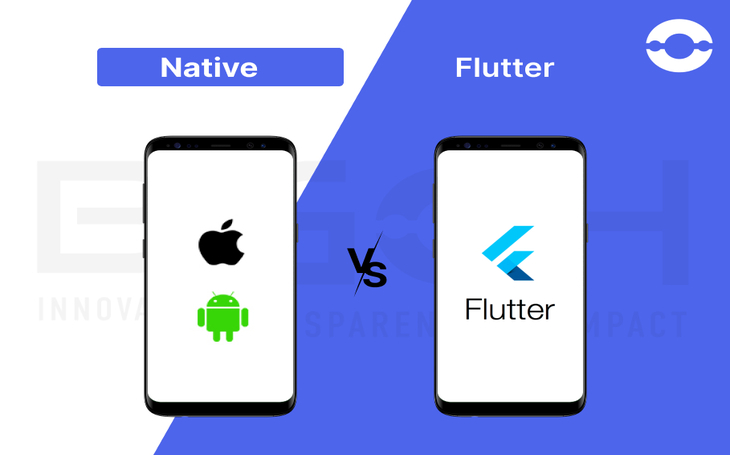
Do you know that smartphone users are growing at a faster rate? Around 86.41% of the world’s population owns a smartphone. Customers use mobile phones to fulfill their day-to-day needs, such as purchasing a product, booking a cab, or reserving their favorite 5-star hotel. Mobile apps have become the go-to option for customers; therefore, today’s businesses are tapping the market by developing innovative mobile phones.
If you think that big players in the industry are introducing the latest smartphones every year or every month, you are on the wrong track. Many small-scale and medium-sized businesses do understand that to stay connected with customers, say a big yes to mobile phones.
Research from Statista says,” The number of mobile app downloads has reached up to 299 billion in 2023 from 247 billion in 2020. Many app downloads make businesses think about how they can stand out from the market and create a competitive edge.
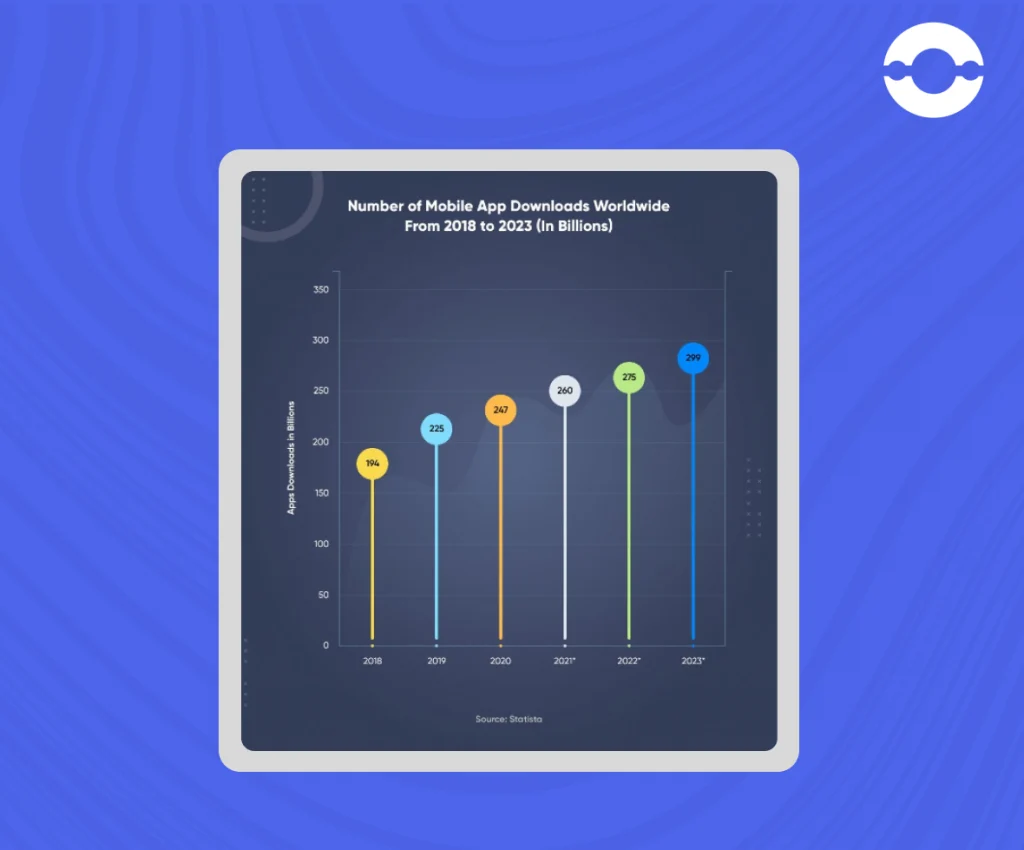
In this blog, we will delve deeper to make you understand why apps are important, and a detailed walkthrough about native vs flutter frameworks that can help you make the right decision for your next app development project.

What is Native App Development?
A native app is an app that is created for a specific platform (IOS/android). Native apps are good to develop for providing a native-like user experience. With the native app development framework, developers can access more features and functionalities of the app such as GPS, sensors, and cameras.
In a nutshell, apps targeted for the specific platform or operating system should be developed using the native framework.
There Are 2 Types of Native Apps –
- Android– It is developed using Java/Kotlin
Developers used Java 5 years back to develop an Android application, but now developers are using Kotlin programming language to launch Android apps.
- IOS – It is developed using Objective C/Swift
Today, most startups are developing applications using native app development frameworks because they are concerned about the investment required in building platform-specific apps.
Here are a few examples of apps that are built using a native framework – Google Maps, Artsy, Shopify, WhatsApp, and Pinterest
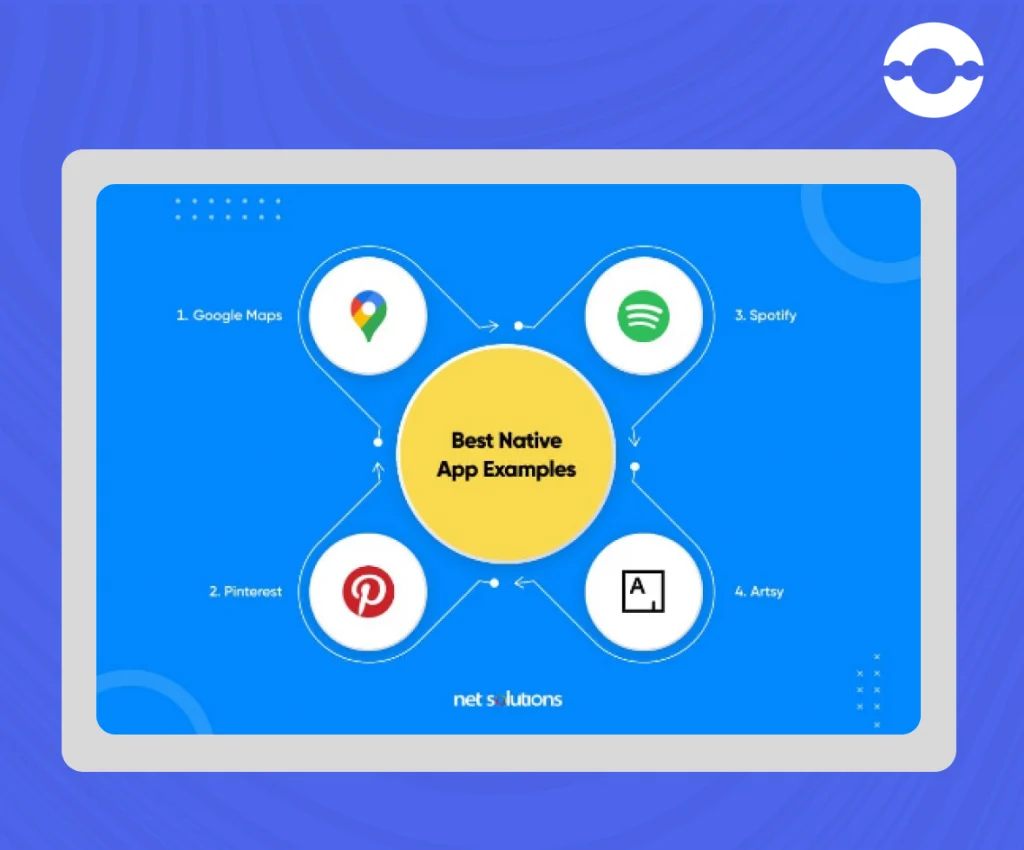
What Are The Advantages of Native App Development?
1. Speeds up the development process
Native app development framework involves developing apps using platform-specific guidelines. Native apps provide access to platform APIs as it gets direct support from Android and IOS. So, they offer fast development speed.
2. Access to offline functionality
Native apps provide a feature of offline functionality as users can operate these apps in the absence of internet connectivity. Users need not take the headache of accessing app functionalities even if the internet connectivity is not there.
3. Easy maintenance
As you already know, android comes from Google, and IOS is developed by Apple. When developers create native apps, they get huge support from Android and Apple because they get access to platform-specific SDKs and other development tools. Therefore, developers need not worry about maintenance and updates.
4. Interactive apps
Native apps are more interactive as compared to cross-platform apps because these apps are built keeping in mind platform specifications. It provides a more native experience to users, and users can interact with an app via gestures and other complex functionalities.
When to Use Native Apps For Business?
- When you want to provide an exceptional native user experience
- When you want to build 3D games and animated apps
- When you want to create a separate app for both platforms
- When you want to add complex features and access device-specific functionalities like camera, GPS, etc.
What is Cross-Platform Development?
Cross-platform development means developers are using shareable code to develop an app that could support multiple platforms. As developers are using one codebase to develop apps for IOS/Android, it saves the developers’ development time.
Cross-platform app development follows one principle-“ Write code once and run everywhere.” In a nutshell, the codebase is used once and runs on multiple platforms.
Here is an example of apps that have been developed using a cross-platform framework – Bloomberg, skype, Slack etc.
Here are the 3 most popular cross-platform frameworks which are used to build cross-platform apps-
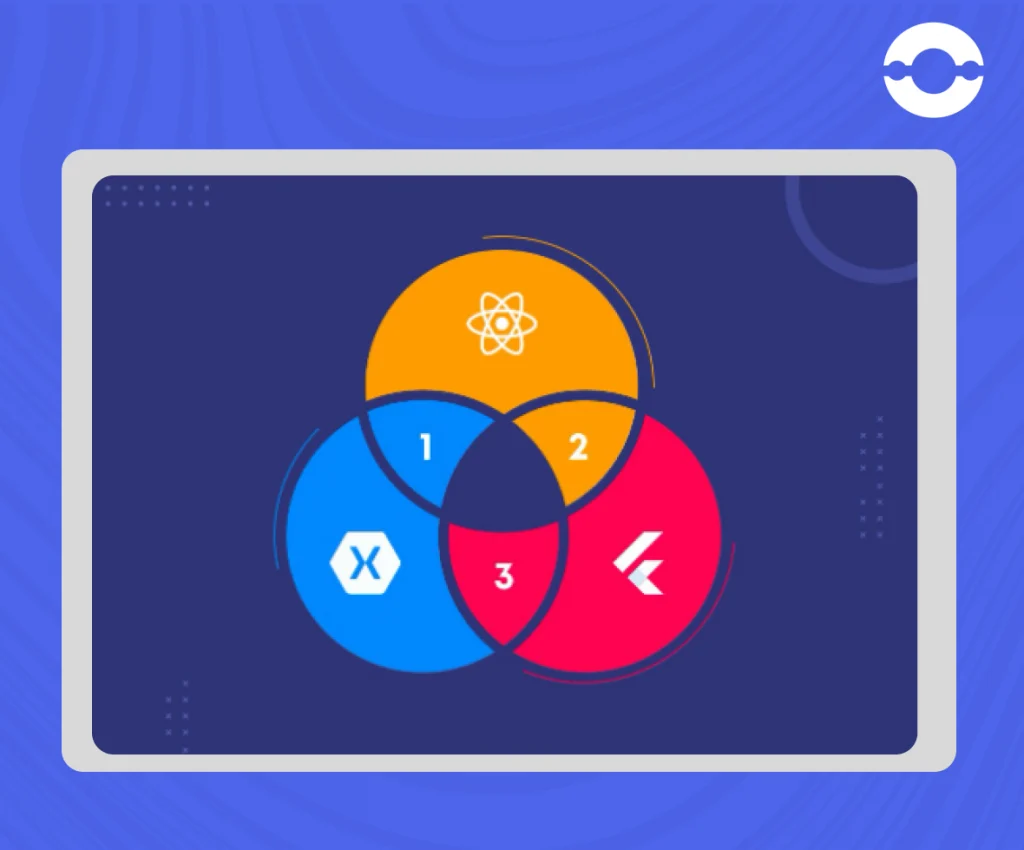
- React native framework (Facebook)
- Flutter framework (Google)
- Xamarin framework (Microsoft)
What is Flutter Framework?
Flutter is a cross-platform framework developed by Google in 2017. It helps in developing high-performing applications that work on both Android and IOS. It allows the developers to quickly develop apps for Android, IOS, and the web that too with an affordable cost.
Why Flutter Framework is Gaining Popularity?
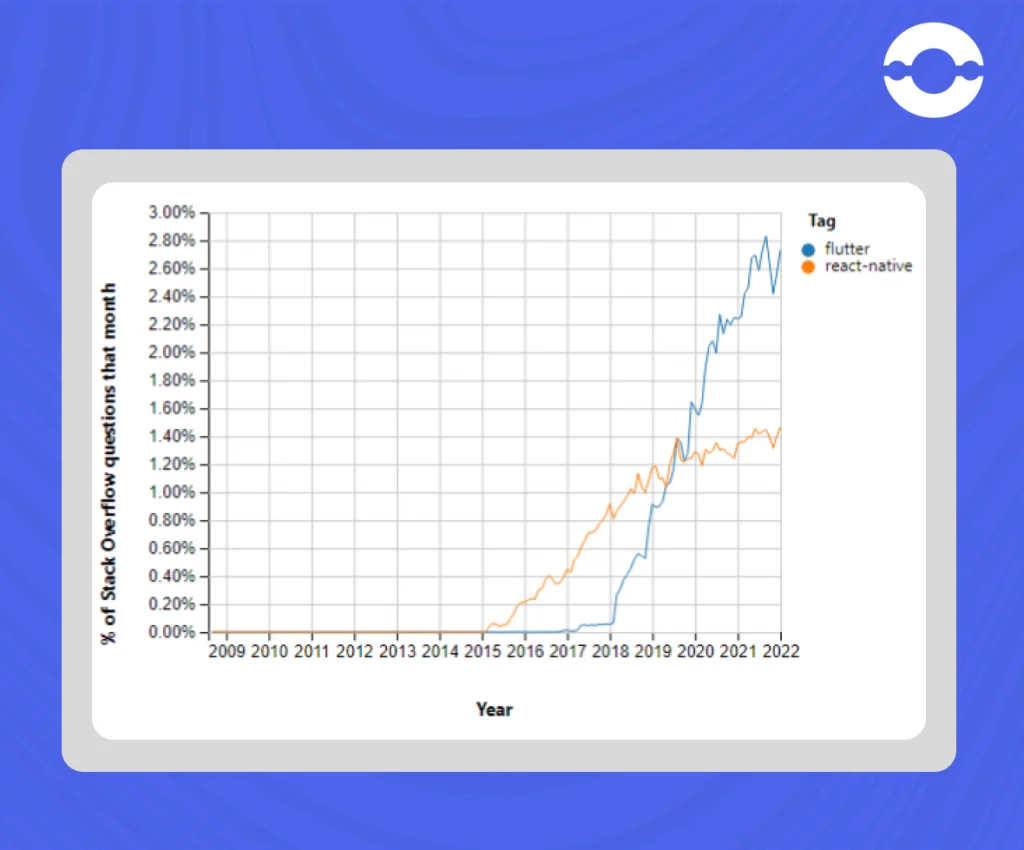
Source: Stack overflow
The Flutter framework is gaining a lot of popularity these days-
- Flutter is a profitable option for startups as they can quickly build MVP with less cost
- Allows the developers to build smooth cross-platform applications
- Use a single codebase to launch apps for multiple platforms
- Google provides support for Flutter as it recognizes it as the official framework for developing Android applications.
- Flutter has its own customizable widgets that give the native-like appearance of an app
Flutter and native app development are the 2 most preferred options by developers when it comes to developing mobile applications.
What Are The Advantages of Cross-Platform Development?
1. Code Reusability
Cross-platform app development provides an added advantage of code reusability, where an entire code is kept in one place and is used for developing 2 separate apps (IOS/Android). Using a single codebase saves the development time and effort of the developer.
However, in the case of native app development, a developer has to write 2 separate codes and the company needs to hire 2 separate developers to develop Android and IOS apps.
For Instance – When the developers create a codebase for IOS, they can compile the same code for developing an Android app. This is called the code reusability feature.
2. Faster maintenance
Cross-platform apps use a single codebase to develop apps, so it becomes easy for developers to test the code, identify the bugs, fix it, and do the necessary upgrades and maintenance. In the case of a native app development framework, it is somewhat challenging for developers to test native apps as there are 2 separate codebases.
3. Cost-effective
Developing cross-platform apps are a cost-effective solution as compared to developing native apps. The cost required to develop cross-platform apps saves your development cost by 30%. Not only this, but it also shortens the app development process.
When to Use Cross-Platform Apps For Business?
- When you want to create an app for multiple platforms
- When you want to use the shareable code across various platforms
- When you don’t want to add complex features to an app
- When you don’t want to create a 3D or animated app
Let’s understand the difference between Native vs Flutter
| Basis of comparison | Flutter | Native |
| Speed of development | The speed of developing native apps is slower as the developer has to write 2 separate codebases | It requires low maintenance efforts as there is a single codebase so developers can easily track the problems |
| Maintenance | The cost of development is less in developing cross-platform apps as a developer can create a single codebase that can run on multiple platforms | It requires high maintenance efforts as developers need to maintain 2 separate codebases |
| Cost of developing apps | In Flutter, third-party plugins are required | The organization needs to hire 2 separate developers for developing Android and IOS apps |
| Platform Integrations | Cross-platform apps can be quickly developed using a single codebase so the time required to market apps is quicker | While Native can support platform integration capabilities as it has huge support from Google and Apple |
| Time to market | Alibaba, google ads, byte dance, etc. | While, Native can support platform integration capabilities as it has huge support from Google and Apple |
| Top players/Apps | Native app development is time-consuming so it takes more time to market the apps. | While Native can support platform integration capabilities as it has huge support from Google and Apple. |
Wrapping Up
Now you have a clear idea of which kind of app would best suit your business. But, to help you make the right decision in your app development journey, here are some use cases that can help you make a better choice between Native vs Flutter.
When is native app development suitable for a developer?
- When you want to build high-performing applications
- When you want to get full support for platform-specific capabilities
- When there is a need to update your app according to the latest OS
- When you want to build an app for a particular platform
When to use cross-platform apps for business?
- When you want to create an app for multiple platforms
- When you want to use the shareable code across multiple platforms
- When you want to reach the target audience quickly
- When you need to market the app
FAQ
In the case of native development, two different codebases are created to run apps on Android and iOS. However, Flutter saves developers’ time and reduces the development cost of building cross-platform apps by 30%.
Native App gives native experience and performance advantage as compared to the flutter. In native development, developers create two different codebases to run apps on Android and iOS.
The performance of native apps is much faster as it supports platform-specific guidelines and has access to inbuilt platform features and integrations. Flutter has an animation speed of 50-60 frames per second but when it comes to overall performance, choosing native apps is the wise option.
Both Native and Flutter offer excellent user experiences, developers should select one over the other depending on their use case.
For instance, if an app needs a lot of Native features, like video editing or Bluetooth connectivity, we should choose Native, whereas Flutter is also a good option if the app only needs basic SDK integration and needs to bind and render data on the user interface.
Flutter is a better option than Native if a brand prefers its own branding guidelines over platform (Android or IOS) guidelines.
Flutter surpasses Native in terms of development cost. If someone is pro in both Native and Flutter then they can save the cost of development, maintenance, and testing by at least 30% as compared to native app development
The Flutter app can give a native look and feel. It has its UI rendering engine and customizable widgets to provide a native-like appearance.




